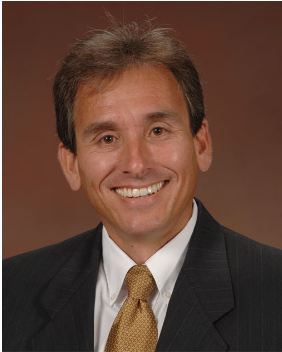The Sustainable Groundwater Management Act
When: April 3, 2015, 12 pm
Where: Sacramento State, 6000 J Street | Santa Clara Hall, Room 1207
Topic: Sustainable Groundwater Management Act
Speaker: David Gutierrez, Chief of Division of Safety of Dams and Program
Manager for the Groundwater Sustainability Program within the Department of
Water Resources
Map
This seminar series is open to the public.
Food will be provided for the first
20–25 people to arrive.
By David Gutierrez, Inaugural Water Seminar Series Speaker
Groundwater resources play a vital role in maintaining California's economic and environmental sustainability. During an average year, California's 515 alluvial groundwater basins and sub-basins contribute approximately 38 percent toward the state's total water supply. During dry years groundwater contributes up to 46 percent or more of the statewide annual supply and serves as a critical buffer against the impacts of drought and climate change. Many municipal, agricultural, and disadvantaged communities rely on groundwater for up to 100 percent of their water supply needs. Groundwater extraction in excess of natural and managed recharge has caused historically low groundwater elevations in many regions of California.
On September 16, 2014, Governor Edmund G. Brown Jr. signed a three-bill package known as the Sustainable Groundwater Management Act (SGMA). The legislation allows local agencies to customize groundwater sustainability plans to their regional, economic, and environmental needs. SGMA creates a framework for sustainable, local groundwater management for the first time in Californias history, and includes the following:
- Provides for sustainable management of groundwater basins
- Enhances local management of groundwater consistent with rights to use or store groundwater
- Establishes minimum standards for effective, continuous management of groundwater
- Provides local groundwater agencies with the authority, technical, and financial assistance needed to maintain groundwater supplies
- Avoids or minimizes impacts for land subsidence
- Improves data collection and understanding of groundwater resources and management
- Increases groundwater storage and removes impediments to recharge
- Empowers local agencies to manage groundwater basins, while minimizing state intervention
SGMA requires local agencies to establish a new governance structure, known as Groundwater Sustainability Agencies (GSA). GSAs must develop groundwater sustainability plans for groundwater basins or sub-basins that are designated as medium or high priority.
The Department of Water Resources (DWR) has key roles in the implementation of the SGMA. DWR will develop a framework for sustainable groundwater management by developing regulations and best management practices and will also assist local agencies by providing technical and planning assistance.
David Gutierrez
 David Gutierrez is currently the Chief of Division of Safety of Dams and Program Manager for the Groundwater Sustainability Program within the Department of Water Resources. He has worked for the department in several capacities over the past 35 years including Chief of the Division of Safety of Dams (DSOD), Deputy Director for Public Safety, and Deputy Director for Business Operations. As Chief of DSOD he oversees the regulation of over 1,250 dams in California and as Deputy Director of Public Safety, he oversaw the development of the FloodSAFE California Program. He has a Bachelor of Science degree in Civil Engineering and Master of Science degree specializing in Geotechnical Engineering from California State University, Sacramento. He is a registered professional civil and geotechnical engineer in the State of California. David has served on the Board of Directors for the Association of State Dam Safety Officials and also served as president of the organization. He is a member of the National Dam Safety Review Board and the Strong Motion Instrumentation Advisory Committee of the California Division of Mines and Geology.
David Gutierrez is currently the Chief of Division of Safety of Dams and Program Manager for the Groundwater Sustainability Program within the Department of Water Resources. He has worked for the department in several capacities over the past 35 years including Chief of the Division of Safety of Dams (DSOD), Deputy Director for Public Safety, and Deputy Director for Business Operations. As Chief of DSOD he oversees the regulation of over 1,250 dams in California and as Deputy Director of Public Safety, he oversaw the development of the FloodSAFE California Program. He has a Bachelor of Science degree in Civil Engineering and Master of Science degree specializing in Geotechnical Engineering from California State University, Sacramento. He is a registered professional civil and geotechnical engineer in the State of California. David has served on the Board of Directors for the Association of State Dam Safety Officials and also served as president of the organization. He is a member of the National Dam Safety Review Board and the Strong Motion Instrumentation Advisory Committee of the California Division of Mines and Geology.

